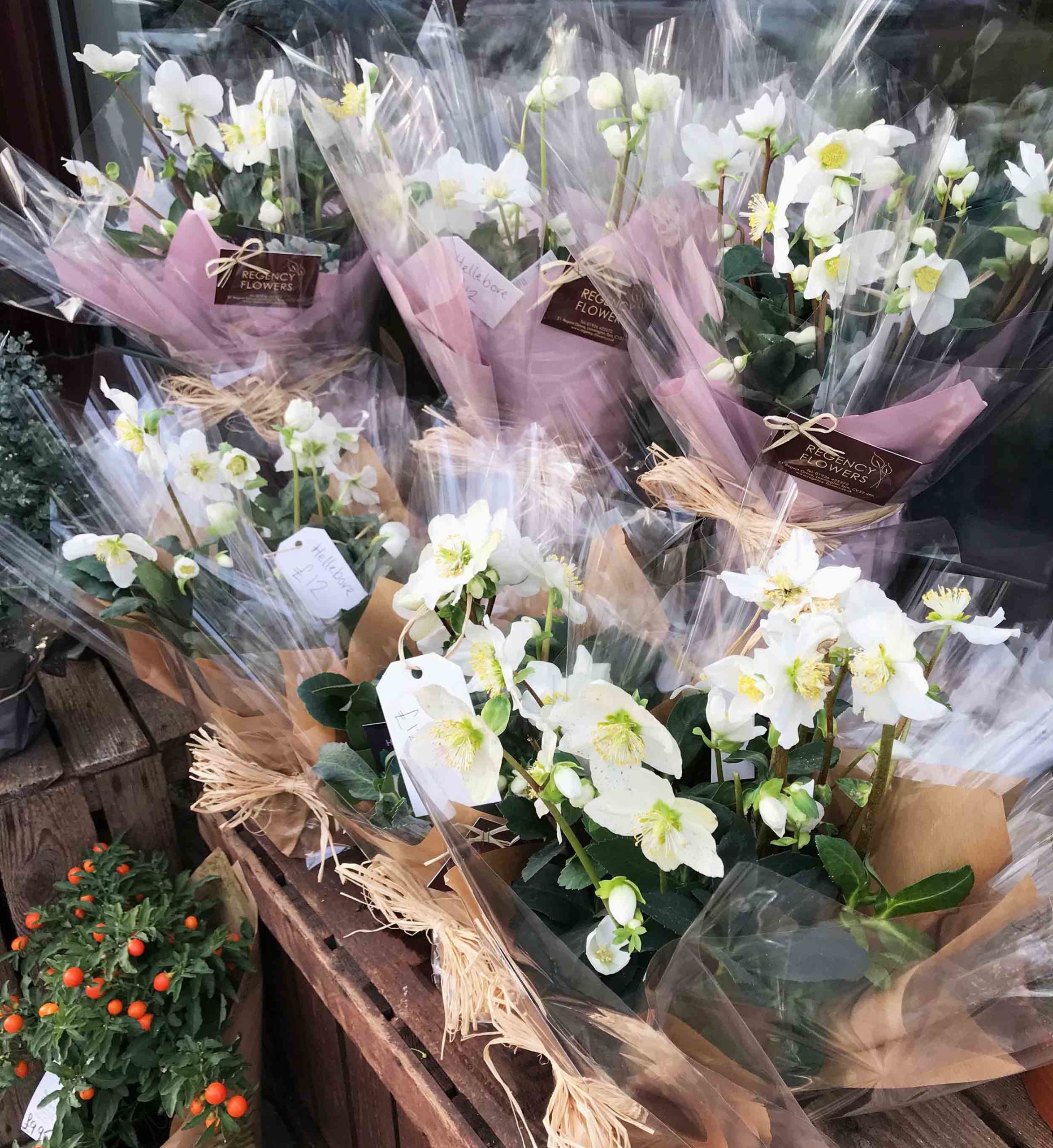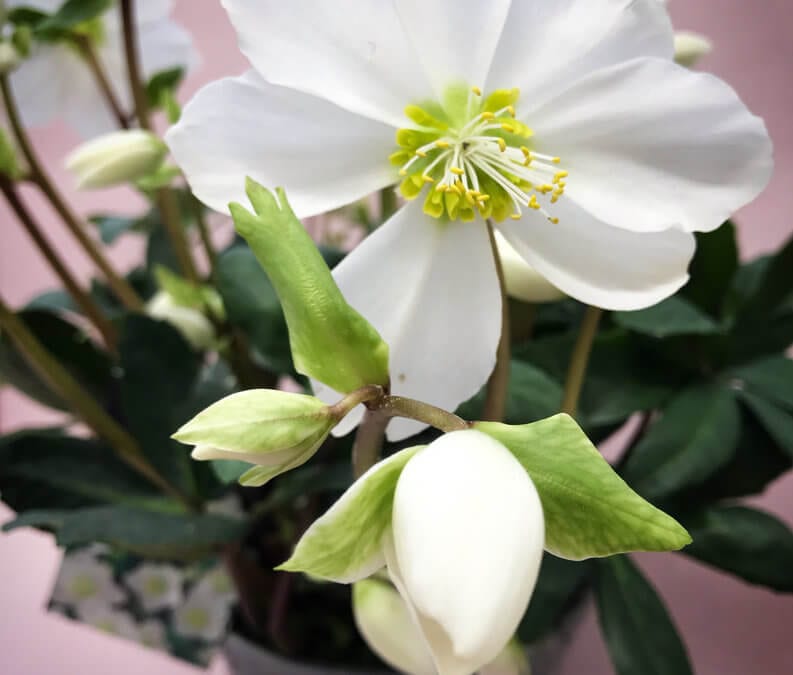In this post we’d like to celebrate one of the seasonal stars of this time of year. With so many flowers now being available all year round, it’s nice that some still have a distinct season. It makes it a joy to see them appear for sale at the flower markets – like meeting up with a friend you haven’t seen for a year, it’s exciting to see them again and then instantly comfortable and familiar.
One such friend, which appears in the shop at this time of year with its solemn little heads nodding reverently, is the Hellebore.
There’s much to love and to learn about this humble beauty – their flowers are long-lasting, sometimes for up to three months, with colours ranging from white and pale pink to deep purple. They are an excellent plant for gardeners who prefer a low-maintenance approach. They are fairly drought-resistant once established, they are happy in shade and partial shade, as evergreens their foliage provides coverage and interest all year round and then they flower at a time when most other flowering plants are dormant.
In celebration of Hellebore season, here are five facts you may or may not know about them…
- Hellebores belong to the Ranunculaceae family of plants which also includes buttercups, clematis, delphiniums and anemones.
- Although not closely related to roses, one species of Hellebore, Helleborus niger, is known as the ‘Christmas Rose’. Apart from the fact that they flower in winter, this is also because of a legend in which hellebore flowers grew up from the snow where the tears of a child fell because she had no gift to offer the baby Jesus. Another hellebore species, Helleborus orientalis, is known as the ‘Lenten Rose’ because it blooms in early spring around the time of Lent.
- Hellebore plants are poisonous to humans and animals. Rabbits and dear know this and don’t eat them, making them naturally pest-resistant.
- The powers and properties of hellebores feature repeatedly in myths and folklore including an ancient Greek tale of a goatherd using hellebores to cure the daughters of King Proteus of madness, and the claims of 20th century herbalist Maude Grieve that powdered hellebore scattered over the ground and walked over would cause invisibility.
- Roman naturalist and philosopher Pliny the Elder believed that if an eagle saw you digging up a hellebore it would cause your death. As a preventative measure against this fate, Pliny recommended drawing a circle around the plant, facing East and saying a prayer before digging. We simply suggest leaving the digging up to someone else and picking up a pre-potted hellebore in the shop, just to be on the safe side!




Recent Comments